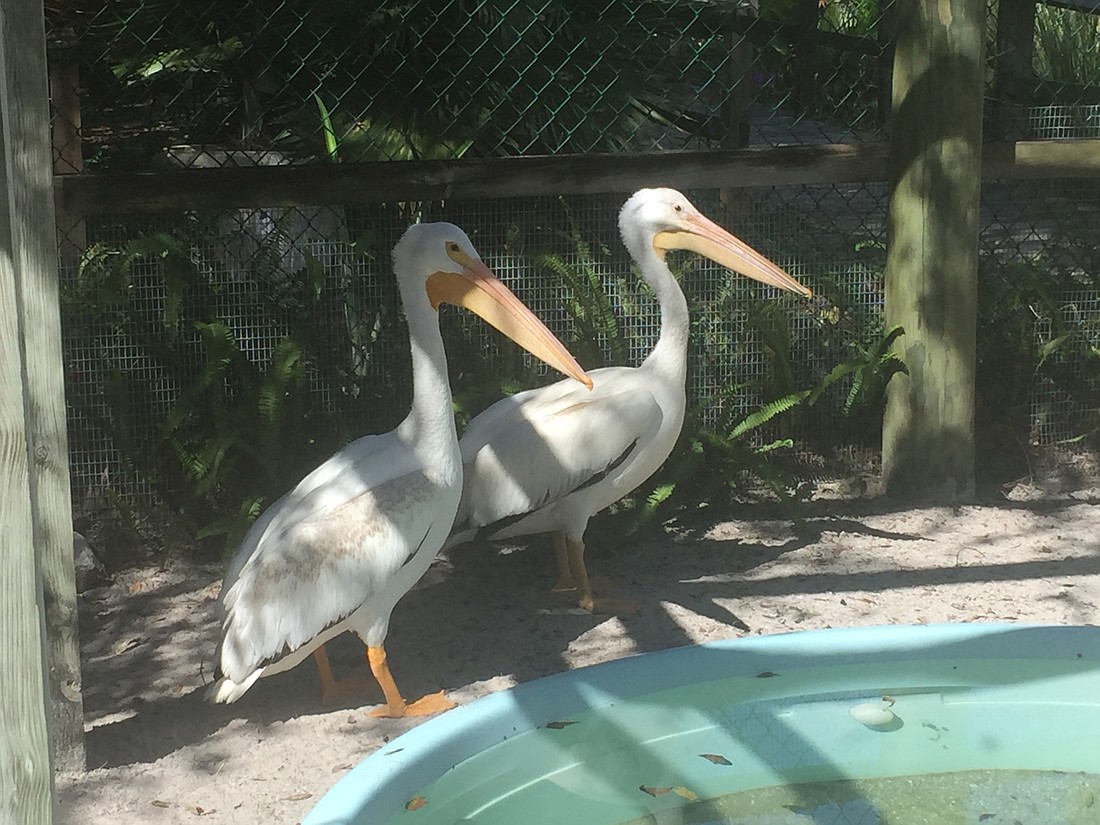- November 20, 2024
-
-
Loading

Loading

Although most birds migrating for the winter flock to the area after weeks of travel, two white pelicans made it to Sarasota in just a few short hours.
“These birds flew Delta instead of on their own,” Save Our Seabirds CEO David Pilston said.
The two pelicans are currently in the rehabilitation care of Save Our Seabirds. One pelican, from Willowbrook Wildlife Center, in Glen Ellyn, Ill., is a bird that was too young to fly. The other bird, from the Wildlife In Need Center, in Oconomowoc, Wisc., is missing its primary feathers and also unable to fly.
“White pelicans are the original snowbirds. They started migrating here before any humans ever decided to winter here.” — Save Our Seabirds CEO David Pilston
“They came to us because of the timing of migration,” Pilston said. “By the time they’re rehabbed and ready for release, their flocks would already be down here. It wouldn’t make sense for them to be rehabbed up north.”
White pelicans are one of North America’s largest birds. They spend their summers on inland lakes in the northern U.S. and Canada and in the winter months migrate down to the coastal areas of the southern U.S., Canada and Central America.
“White pelicans are the original snowbirds,” Pilston said. “They started migrating here before any humans ever decided to winter here.”
The juvenile bird needs to rest and to grow in order to be released. The bird missing its primary feathers will receive a feather transplant with feathers from brown pelicans. It is not known how the feathers were lost.
The birds will be rehabilitated and are expected to be released together in Cortez.
“We like the buddy system,” Avian Hospital Administrator Dana Harenda said. “They’re like long lost best friends, so it’s perfect.”
Because they will be released, the birds are in isolation, and visitors to Save Our Seabirds cannot view them up close.
“We need to keep them isolated,” Pilston said. “It keeps them wild. We don’t want them to imprint with people. We want them to continue being angry with humans.”
The birds are fed a mixture of both freshwater and saltwater fish.
“They’re mainly freshwater fish eaters, but they bulk up on saltwater fish,” Pilston said. “We have them on a strict diet and have specially delivered freshwater fish. They could potentially get too big if they ate too much saltwater fish.”
Although they’re not often found at Save Our Seabirds, this isn’t the first time the sanctuary has rehabilitated white pelicans. In several cases, the sanctuary has taken care of white pelicans that were overly exhausted from their migrations to Florida.
Like the white pelicans, many birds do not stick to a single region or even country, and Save Our Seabirds’ reach expands well beyond Sarasota.
“Our impact goes far beyond Sarasota and Manatee counties,” Pilston said. “Many of these birds we release migrate all over the place. We have an impact nationwide and beyond.”